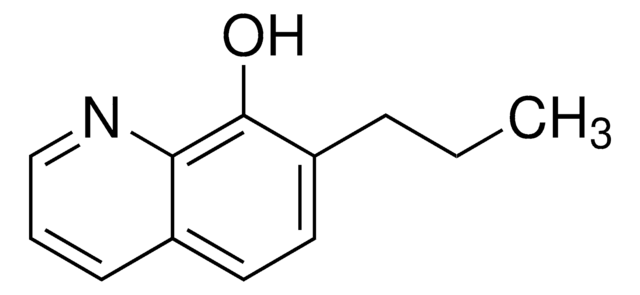37640
2,8-Quinolinediol
≥99.0% (HPLC)
Sinonimo/i:
2,8-Dihydroxyquinoline
Scegli un formato
About This Item
Prodotti consigliati
Saggio
≥99.0% (HPLC)
Stato
powder
Punto di fusione
~290 °C (dec.)
Stringa SMILE
Oc1ccc2cccc(O)c2n1
InChI
1S/C9H7NO2/c11-7-3-1-2-6-4-5-8(12)10-9(6)7/h1-5,11H,(H,10,12)
ZXZKYYHTWHJHFT-UHFFFAOYSA-N
Descrizione generale
Applicazioni
- Procaterol
- Indacaterol[4]
Avvertenze
Warning
Indicazioni di pericolo
Consigli di prudenza
Classi di pericolo
Eye Irrit. 2 - Skin Irrit. 2 - STOT SE 3
Organi bersaglio
Respiratory system
Codice della classe di stoccaggio
11 - Combustible Solids
Classe di pericolosità dell'acqua (WGK)
WGK 3
Punto d’infiammabilità (°F)
Not applicable
Punto d’infiammabilità (°C)
Not applicable
Dispositivi di protezione individuale
dust mask type N95 (US), Eyeshields, Gloves
Scegli una delle versioni più recenti:
Possiedi già questo prodotto?
I documenti relativi ai prodotti acquistati recentemente sono disponibili nell’Archivio dei documenti.
Active Filters
Il team dei nostri ricercatori vanta grande esperienza in tutte le aree della ricerca quali Life Science, scienza dei materiali, sintesi chimica, cromatografia, discipline analitiche, ecc..
Contatta l'Assistenza Tecnica.









